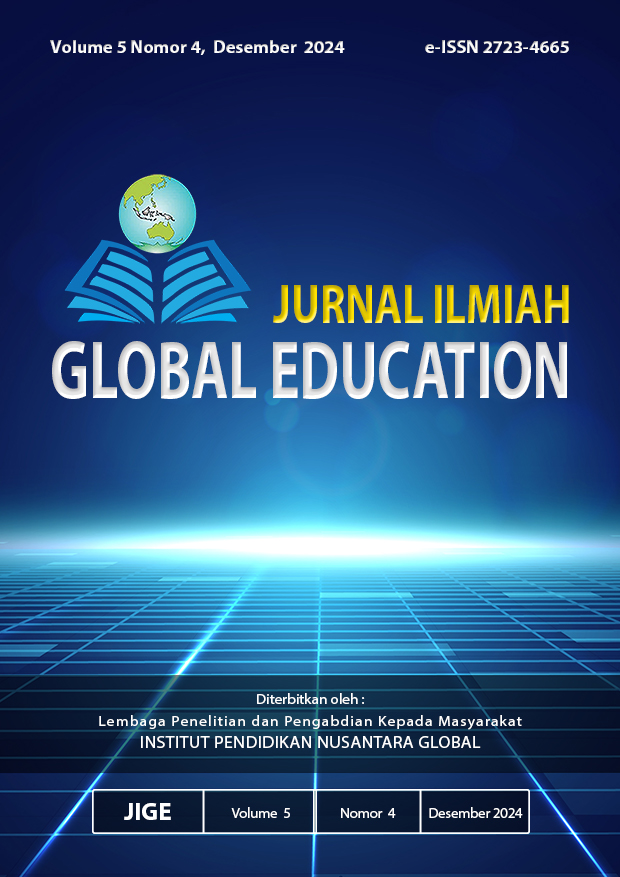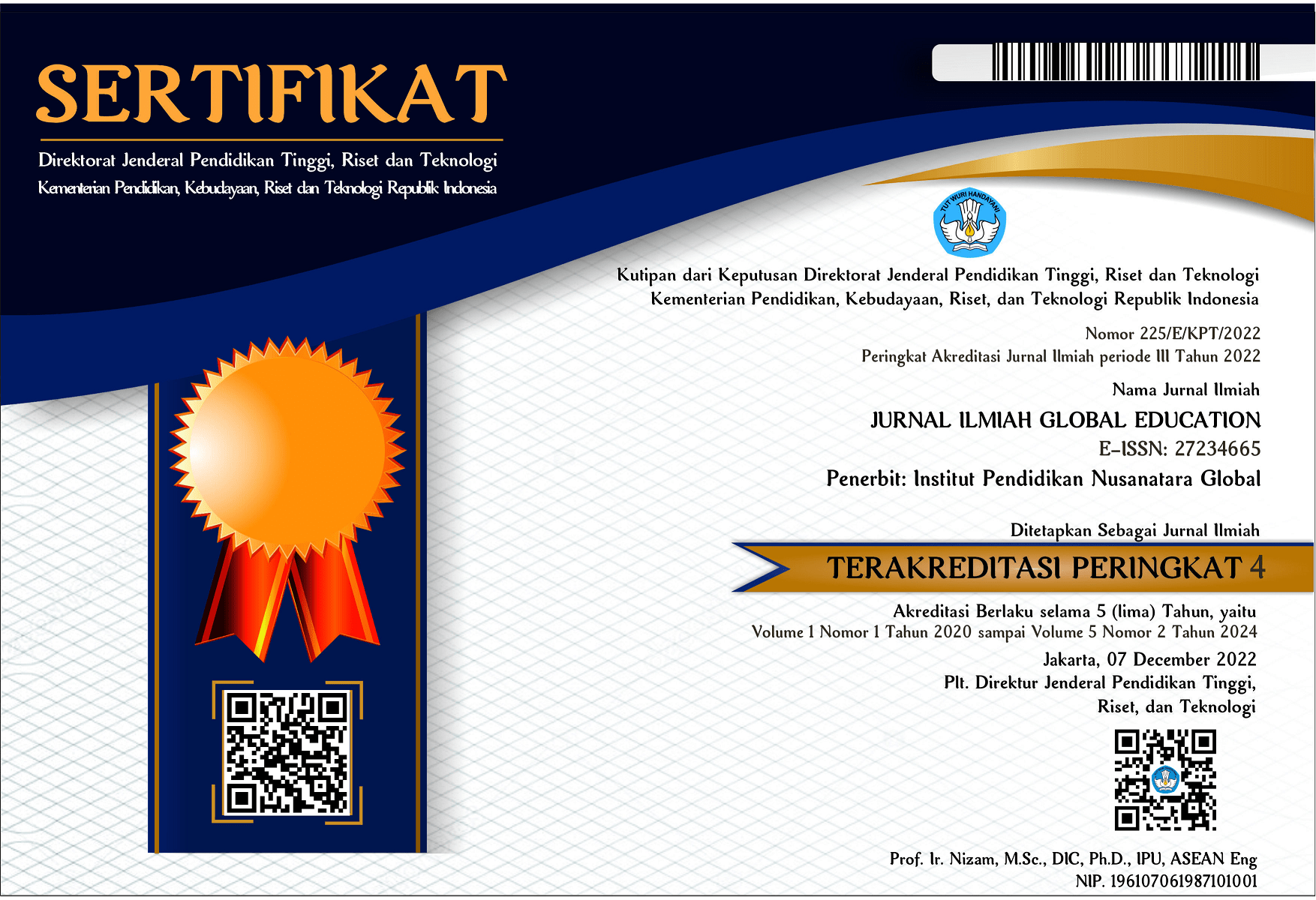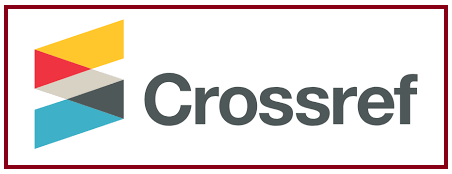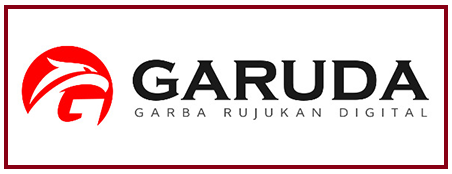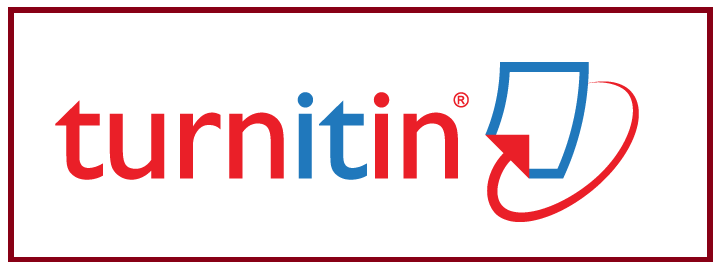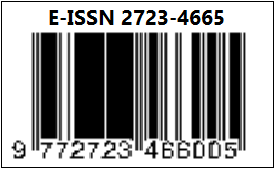Pengaruh Pemasaran Media Sosial dan Pemasaran Influencer terhadap Beli Aktual Produk Keterlibatan Tinggi Berdasarkan Teori TPB
DOI:
https://doi.org/10.55681/jige.v5i4.3685Keywords:
Actual Online Buying Behavior, High Engagement, Influencer Marketing, Online Buying Interest, Social Media MarketingAbstract
The development of social media as a marketing tool has changed the communication style between companies and consumers, including the way of sharing product and brand information to consumers. Consumers are no longer passive recipients of marketing materials. This study is a quantitative research using a survey research design. This research was carried out to conduct hypothesis testing. The sample in this study was determined purposively based on the respondents' criteria, namely, as social media users and had made online purchases of high-engagement products. The determination of the number of research samples is carried out by multiplying the total research indicators by 5 (as the minimum sample) and 10 (as the maximum sample). Referring to the formulation of determining the number of samples with an indicator of 35 multiplied by the maximum sample size, the sample to be taken is 350 respondents with a purposive sampling method using online techniques through google form. Meanwhile, the analysis tool used in this study is descriptive analysis with the Structural Equation Model (SEM) analysis method.
The results of the study showed that social media marketing had a significant influence on buyinghabits, influencer marketing had a significant influence on buyinghabits, and buying interest had a significant influence on actual online buying behaviour.
Downloads
References
Ajzen, I. (1980). Understanding attitudes and predicting social behavior Prentice-Hall Inc. In Fishbein, M. Prentice Hall.
Ajzen, I. (1991). The Theory of Planned Behavior. Organizational Behavior and Human Decision Processes, 50(2), 438–459. https://doi.org/10.4135/9781446249215.n22
Asih, D., Setini, M., Soelton, M., Muna, N., Putra, I. G. C., Darma, D. C., & Judiarni, J. A. (2020). Predicting green product consumption using theory of planned behavior and reasoned action. Management Science Letters, 10(14), 3367–3374. https://doi.org/10.5267/j.msl.2020.5.042
Brown, M., Pope, N., & Voges, K. (2003). Buying or browsing? European Journal of Marketing, 37(11/12), 1666–1684. https://doi.org/10.1108/03090560310495401
De Veirman, M., Cauberghe, V., & Hudders, L. (2017). Marketing through instagram influencers: The impact of number of followers and product divergence on brand attitude. International Journal of Advertising, 36(5), 798–828. https://doi.org/10.1080/02650487.2017.1348035
Eunju, K., Kim, K. H., & Zhang, H. (2008). A Cross Cultural Study of Antecedents of Minat beli for Sports Shoes in Korea and China. Journal of Global Academy of Marketing Science, 18(1), 157–177. https://doi.org/10.1080/12297119.2008.9707281
Ferdinand, A T., B. R. (2006). Strategic Pathways Toward Sustainable Competitive Advantage. In Graduate College of Management: Vol. DBA Thesis (Issue March, p. 288).
Fogg, B. J. (2003). Prominence-interpretation theory. In G. Cockton (Ed.), CHI ’03 Extended Abstracts on Human Factors in Computing Systems (p. 722). ACM.
Gautam, V., & Sharma, V. (2017). The Mediating Role of Customer Relationship on the Social Media Marketing and Minat beli Relationship with Special Reference to Luxury Fashion Brands. Journal of Promotion Management, 23(6), 872–888. https://doi.org/10.1080/10496491.2017.1323262
Hosein, N., & Nasim, Z. (2012). Measuring the minat beli of visitors to the auto show. Journal of Management and Marketing Researc, 9(May 2012), 1–17.
Hutter, K., Hautz, J., Dennhardt, S., & Füller, J. (2013). The impact of user interactions in social media on brand awareness and minat beli: The case of MINI on Facebook. Journal of Product and Brand Management, 22(5), 342–351. https://doi.org/10.1108/JPBM-05-2013-0299
Icek, A. (1985). From Intentions to Actions: A Theory of Planned Behavior. In Action Control (pp. 11–39). Springer. https://doi.org/10.1007/978-3-642-69746-3_2
Jun, J., & Arendt, S. W. (2016). Understanding healthy eating behaviors at casual dining restaurants using the extended theory of planned behavior. International Journal of Hospitality Management, 53(5), 106–115. https://doi.org/10.1016/j.ijhm.2015.12.002
Keller, K. L. (2013). Strategic Brand Management: Building, Measuring, and Managing Brand Equity (4th ed.). Prentice-Hall.
Kim, A. J.-Y., & Ko, E.-J. (2010). The Impact of Design Characteristics on Brand Attitude and Minat beli - Focus on Luxury Fashion Brands -. Journal of the Korean Society of Clothing and Textiles, 34(2), 252–265. https://doi.org/10.5850/jksct.2010.34.2.252
Knoll, J. (2016). Advertising in social media: A review of empirical evidence. International Journal of Advertising, 35(2), 266–300. https://doi.org/10.1080/02650487.2015.1021898
Ko, E., Kim, K. H., & Zhang, H. (2008). A cross cultural study of antecedents of minat beli for sports shoes in Korea and China. Journal of Global Academy of Marketing Science, 18(1), 157–177.
Kudeshia, C., & Kumar, A. (2017). Social eWOM: does it affect the brand attitude and minat beli of brands? Management Research Review, 40(3), 310–330. https://doi.org/10.1108/MRR-07-2015-0161
Lee, M., Rodgers, S., & Kim, M. (2009). Effects of valence and extremity of eWOM on attitude toward the brand and website. Journal of Current Issues and Research in Advertising, 31(2), 1–11. https://doi.org/10.1080/10641734.2009.10505262
Lim, W. M. (2013). Toward a theory of online buyer behavior using structural equation modeling. Modern Applied Science, 7(10), 34–41. https://doi.org/10.5539/mas.v7n10p34
Lin, W. B. (2008). Construction of on-line consumer behavior models: A comparative study of industries in Taiwan. International Journal of Commerce and Management, 18(2), 123–149. https://doi.org/10.1108/10569210810895221
Müller, L., Mattke, J., & Maier, C. (2018). #Sponsored #Ad: Exploring the effect of pemasaran influencer on minat beli. In Americas Conference on Information Systems 2018: Digital Disruption, AMCIS 2018.
Negra, A., & Mzoughi, M. N. (2012). How wise are online procrastinators? A scale development. Internet Research, 22(4), 426–442. https://doi.org/10.1108/10662241211250971
Rahayu, N. (2019). Pertumbuhan E-Commerce Pesat di Indonesia. Warta Ekonomi. https://wartaekonomi.co.id/read216302/pertumbuhan-e-commerce-pesat-di-indonesia
Sekaran, U. Bougie, R. (2013). Research methods for business: A skill-building approach (6th Edn). West Sussex, UK:John Wiley & Sons Ltd.
Sugiyono. (2017). Metode Penelitian Bisnis. Alfabeta.
Thongpapanl, N., & Ashraf, A. R. (2011). Enhancing online performance through website content and personalization. Journal of Computer Information Systems, 52(1), 3–13. https://doi.org/10.1080/08874417.2011.11645517
Tutaj, K., & Van Reijmersdal, E. A. (2012). Effects of online advertising format and persuasion knowledge on audience reactions. Journal of Marketing Communications, 18(1), 5–18.
Wang, S., Lin, S., & Li, J. (2018). Exploring the effects of non-cognitive and emotional factors on household electricity saving behavior. Energy Policy, 115(7), 171–180. https://doi.org/10.1016/j.enpol.2018.01.012
Wartaekonomi. (n.d.). Pertumbuhan E-Commerce Pesat di Indonesia.
Wells, J. D., Valacich, J. S., & Hess, T. J. (2011). What signal are you sending? How website quality influences perceptions of product quality and minat belis. MIS quarterly.
Wilson, R. D. (2010). Using clickstream data to enhance business to business website performance. Journal of Business and Industrial Marketing, 25(3), 177–187.
Yan-Mei, J., Ya-Nan, Z., & Wen-Ping, Z. (2011). Decision model research of customers’ first online shopping based on reference group influence. 2011 International Conference on E-Business and E-Government, ICEE2011 - Proceedings, 1191–1198. https://doi.org/10.1109/ICEBEG.2011.5881762
Downloads
Published
How to Cite
Issue
Section
License
Copyright (c) 2024 Rinaldi, Endah Marendah Ratnaningtyas, Mifta Fitriyana, Yayan Supriyani

This work is licensed under a Creative Commons Attribution-ShareAlike 4.0 International License.

